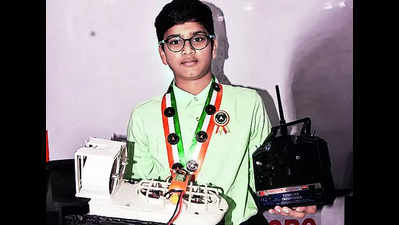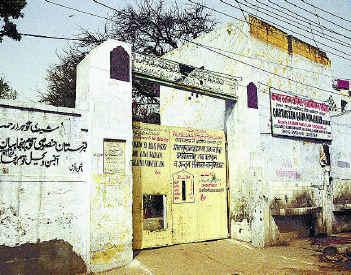Ludhiana, PUNJAB:

Ludhiana:
Izaan Ali, a 12-year old from the city, has made an entry into India Book of Records by making the smallest functional model of hovercraft measuring 10 inches x 6 inches.
Izaan’s hovercraft is remotely controlled and is connected to a GPS system. It uses four brushless motors and 3D printed components to run. This initiative that leverages smart technologies to revolutionise healthcare services was approved by the India Book of Records.
Currently studying in Class 7 at a private school in Ludhiana, Izaan thought of the idea years ago when he lost his grandfather to cardiac arrest. He said the family could not get urgent medical aid during the golden hour.
The hovercraft has been envisioned to seamlessly fill in the current lags in access to essential supplies which are currently restricted by operational constraints like working hours of delivery platforms, thus saving precious lives. An official launch and commercialisation are awaited.
Izaan’s parents are committed to his ambitions. While his father, Imtiaz Ali is an educational consultant, his mother Seher Imtiaz, is a rehabilitation psychologist. Residents of Dugri phase III, his parents shared that Izaan worked on this idea for around six-eight months and burnt the midnight oil (even during) his exams to achieve his goal.
Sharing details, Izaan Ali told TOI, “This hovercraft operates by creating a cushion of air underneath itself, allowing it to float above a surface. The main propulsion and lift for this hovercraft are provided by four brushless motors. The structure was enhanced using 3D printed components, making it customisable and relatively easy to repair or modify.”
His parents said the project is a demonstration of his commitment to renewable and sustainable technology and their importance in modern engineering. The project’s use of four brushless motors for propulsion and lift showcases its commitment to efficiency and performance. This design allows the hovercraft to glide smoothly over various terrains, opening up new possibilities for transportation in diverse environments.
“Furthermore, the project’s approach not only makes the hovercraft more adaptable to different needs but also emphasizes the importance of eco-friendly manufacturing practices.” Izaan added. Aiming to become an automobile engineer, he said, “ It me took around 6-8 months of time and around Rs 20,000 to create the prototype.”
Dimple Verma, Izaan’s mentor said, “This is a 4th generation mode of transport which reduces friction by 20-30% and can be beneficial for medical deliveries to rescue people who do not have connectivity, or are disadvantaged and die in challenging terrain.”
source: http://www.timesofindia.indiatimes.com / The Times of India / Home> News> City News> Ludhiana News / April 04th, 2024









